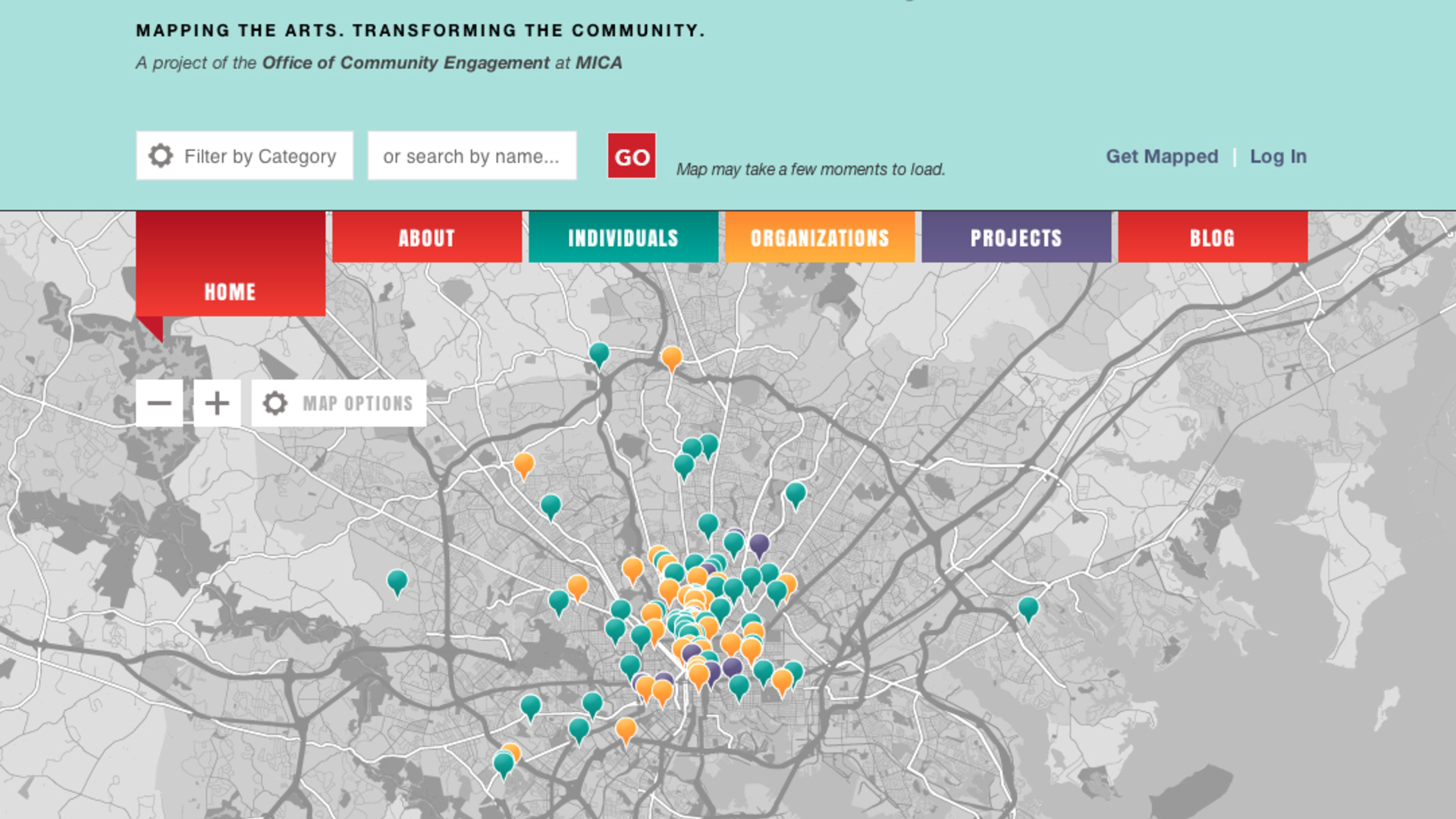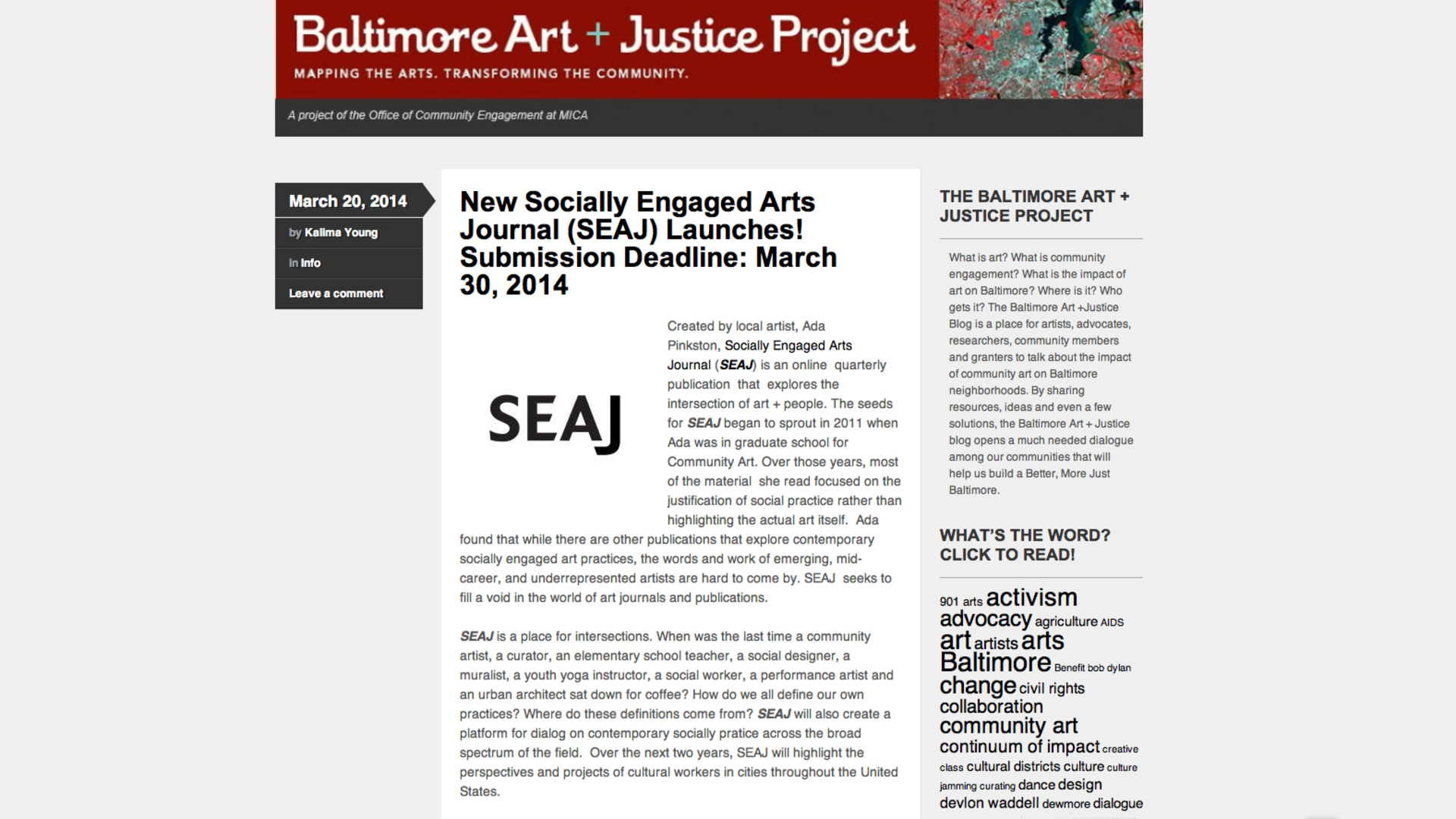Mapping the Intersection of Art and Social Justice in Baltimore

V1.0
In collaboration with MICA and their Center for Creative Citizenship (at that time the Office of Community Engagement), the IRC worked to develop an online social networking and mapping application from the ground up.
The Baltimore Art + Justice Project brought together individuals and organizations working at the intersection of art and social justice in Baltimore City. Like Facebook or LinkedIn, the website enables artists, designers, organizations, and others to securely register and log in to the online community to engage in and continue dialogs through forums, document justice-related artistic endeavors, and create connections between collaborators.
Working with WordPress and the acclaimed Buddypress networking tool, the IRC vastly extended these platforms to merge their functionality seamlessly with application programming interfaces such as Google’s Maps, Charts, and Fusion Tables. The result is a cohesive interactive experience that gives users the unique functionality needed to continue to broaden discourse, raise awareness, and easily search for potential collaborators. Through these online discussions and networking capabilities, the Baltimore Art + Justice Project aims to strengthen collaborations based on art and design to create a better and more just Baltimore.

V2.0
In March 2014, an improved version of the Baltimore Art + Justice. Accessing the site, users can search and locate individuals, organizations, and specific projects that merge artistic strategies and concerns with those of social activism, mapping their physical presence in the city. They can join the project, creating a profile (in any of those categories) and putting themselves on the map alongside their peers and potential collaborators.
The Art + Justice project presented several technical challenges to the IRC team. Testing the original site, we discovered that our initial decision to customize and interlock existing software would require some rethinking of how the site manages the data it displays. As more users joined the project, load time from our database of pin markers to the map was slowing down, making the site difficult to use. IRC programmers redirected the interaction between the database and Google Maps, speeding up the load time and allowing the site’s membership to continue growing without affecting its performance. New filtering options were engineered for the map, editing functions were added to the user profiles, and the site’s search engine was integrated with the map, directing users visually to the connections they were trying to make. The site also has a new video page and a new overall look.

Researchers and Creators
V1.0
Collaborators: Karen Stults and Kalima Young, Office of Community Engagement, MICA
Web Designer and Developer: Abbey Salvo
Systems Administrator: Mark Jarzynski
Graphic Designer: Chris Mahaffy
V2.0
Faculty Lead: Lee Boot
Collaborators: Karen Stults and Kalima Young, Office of Community Engagement, MICA
Web Designers and Developers: Abby Salvo, Gina Thropp
Systems Administrator/Lead Programmer: Mark Jarzynski
Programmers: Wallace Brown, Tenji Tembo
Imaging Research Center, UMBC © 2024